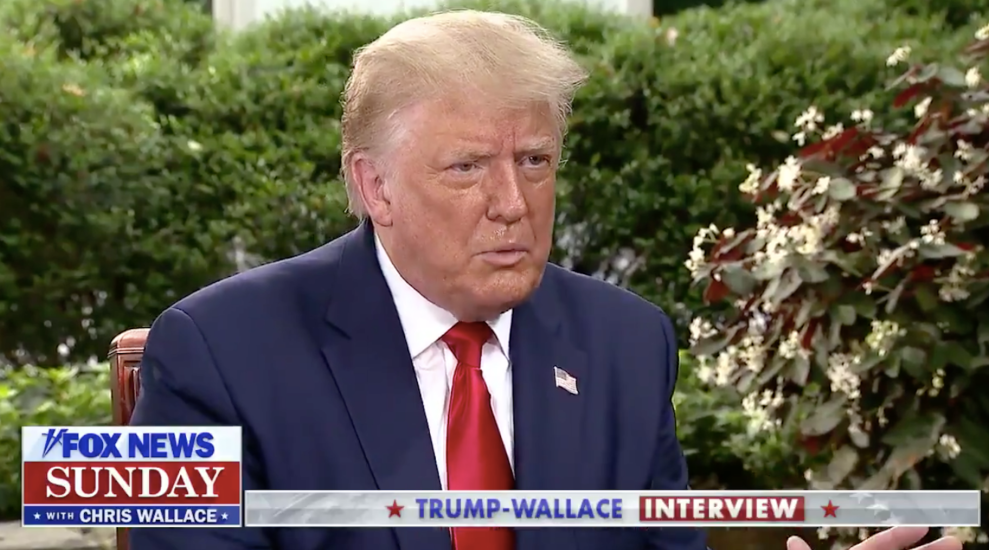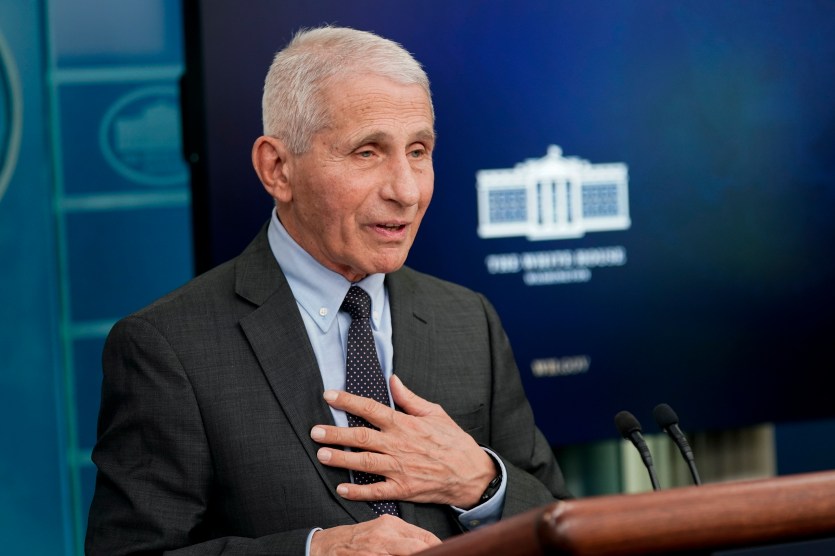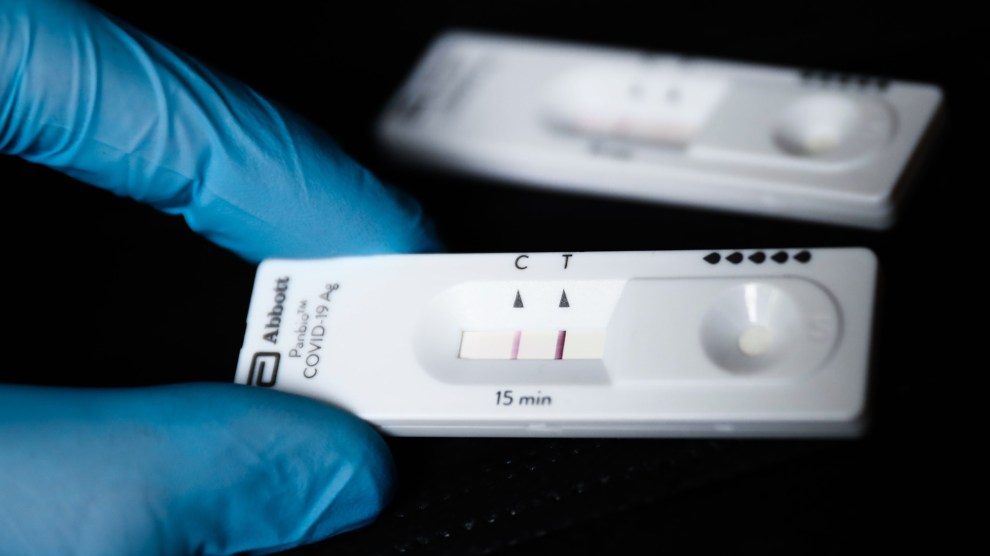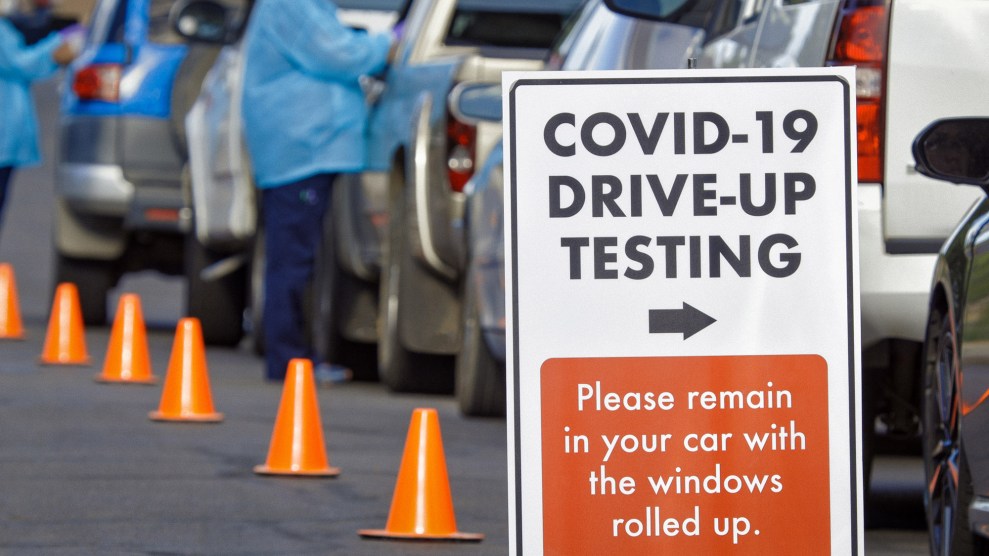
As the COVID-19 crisis escalates across the country, President Donald Trump is continuing to lie about the pandemic, attack his own public health officials, and insist that the virus will eventually disappear on its own.
His latest remarks—in an interview with Fox’s Chris Wallace that aired Sunday—come at a crucial juncture in the nation’s fight against the coronavirus, with cases rising in most states and death tolls once again climbing. Here are some of Trump’s most alarming, incoherent, and downright absurd lines from the interview:
“I’ll be right eventually.”
When presented with a political cartoon that was posted by a top White House communications official that mocked Dr. Anthony Fauci, Trump claimed that Fauci—one of the administration’s top infectious disease experts—was a “little bit of an alarmist.” Wallace went on to cite multiple examples of the president repeatedly assuring Americans that the virus was “under control,” that infections would soon be “close to zero,” and that at “some point” the diseases would “sort of just disappear, I hope.” Trump responded, “I’ll be right eventually.”
“I’ll say it again: It’s going to disappear—and I’ll be right,” Trump continued, before declaring that he’s “been right probably more than anyone else.”
Chris Wallace: You've been wrong a lot on coronavirus, claiming it will quickly disappear and go down to zero/
Trump: "I will be right eventually…I'll say it again, it's going to disappear." pic.twitter.com/LonHZVO8qB
— Justin Baragona (@justinbaragona) July 19, 2020
“They got that one wrong.”
Despite telling countless lies about the coronavirus, the president falsely blamed public health experts for the very false statements he himself has spread.
“Everybody thought the summer it would go away and come back in the fall, well in the summer it came,” Trump said. “They used to say the heat, the heat was good for it and really knocks it out…They got that one wrong. They got a lot wrong. The World Health [Organization] got a tremendous amount wrong. They basically did whatever China wanted them to.”
The remarks were an extraordinary attempt to distance himself from the numerous falsehoods he promoted about the virus in order to downplay its threat. “The virus that we’re talking about having to do, a lot of people think that goes away in April, with the heat, as the heat comes in, typically that will go away in April,” the president said in February, according to the New York Times. There’s evidence that hot temperatures, sunlight, and humidity kill the virus, but that hasn’t stopped it from spreading in the spring and summer months. In April, however, Trump returned to the idea, suggesting—absurdly—that doctors treat patients with “a very powerful light” or an “injection” of disinfectant.
WATCH: President Trump discusses the U.S. response to the coronavirus. Plus, his relationship with Dr. Fauci and much more. #FoxNewsSunday pic.twitter.com/JUo1c2i96Z
— FoxNewsSunday (@FoxNewsSunday) July 19, 2020
“I heard we have the best mortality rate.”
At one point, Trump and Wallace sparred over the rate at which the virus is killing Americans it infects, with the president repeatedly and incorrectly asserting that the United States has the “number one low mortality rate.”
Trump instructed an aide to hand Wallace a chart that would supposedly prove his point. “I hope you show this because it shows what fake news is all about,” Trump told Wallace, who quickly refuted the claim.
“The US ranked seventh, better than the United Kingdom but worse than Brazil and Russia,” Wallace explained to viewers, referring to numbers provided by John Hopkins University. Wallace noted that the White House had provided a “chart from the European CDC,” which showed “Italy and Spain doing worse [than the United States] but countries like Brazil and South Korea doing better. Other countries doing better, like Russia, aren’t included in the White House chart.”
"Ready? Will you please get me the mortality rate? Kayleigh is right here… I heard we have the best mortality rate" – the WH just flat out made up a chart to create a false impression that the US has the best mortality rate in the world during Trump's interview w/ Chris Wallace pic.twitter.com/yw8QGBTRVs
— Aaron Rupar (@atrupar) July 19, 2020
“They have the sniffles.”
Throughout the interview, Trump repeatedly and falsely blamed increased testing capabilities for the rise in coronavirus cases.
“But sir, testing is up 37 percent,” Wallace said. “Cases are up 194 percent. It isn’t just that the testing has gone up, it’s that the virus has spread. The positivity rate has increased.”
“Many of those cases are young people that would heal in a day,” Trump said. “They have the sniffles and we put it down as a test…many of those cases shouldn’t even be cases.”
While it’s true that the cases among young people are rising, the president’s claim that the situation is somehow less dangerous is disingenuous, as young people are able to spread the virus to more vulnerable demographics, including elderly people and people with underlying health conditions.
“I’ll have to see.”
Stepping away from the pandemic for a moment, Trump declined to say whether he would accept the results of the November presidential election. “I have to see,” he said. “I’m not just going to say yes.”
Though he gave a similar response back in 2016, the possibility of Trump refusing a peaceful transition carries considerable more seriousness, as he’s now the incumbent.
“You couldn’t answer many of the questions.”
Trump, while bashing the competence of Joe Biden, did not appear to take well to Wallace’s assessment that the cognitive test the president recently claimed to have “aced” wasn’t all that challenging.
“Incidentally, I took the [cognitive] test, too, when I heard you passed it. It’s not the hardest test,” Wallace said. “It shows a picture, and it says, ‘What’s that?’ And it’s an elephant.”
Clearly offended, Trump shot back, “I’ll bet you couldn’t even answer the last five questions.”
It only got dumber from there:
“It’s not the hardest test. It shows a picture, and it says, ‘What’s that?’ And it’s an elephant.”
Watch Trump melt down after Chris Wallace tells him that his cognitive test is pretty easy to pass: https://t.co/xSMchzC2RX pic.twitter.com/OL9lSpXbDd
— Mother Jones (@MotherJones) July 19, 2020
For a look back at Trump’s disastrous handling of the coronavirus pandemic:















